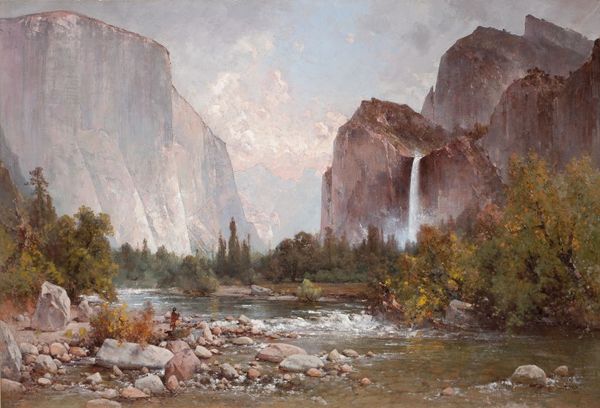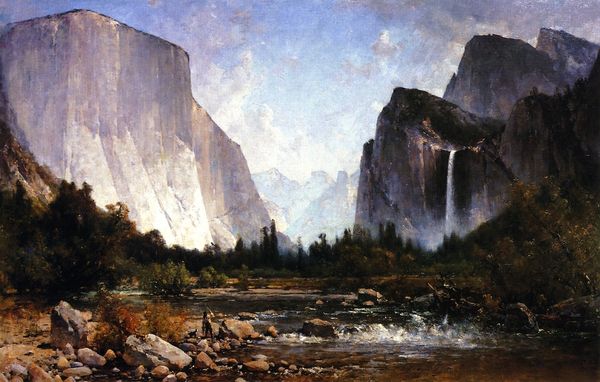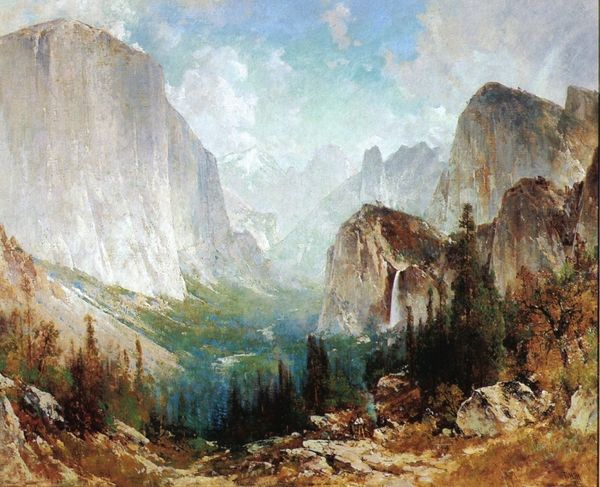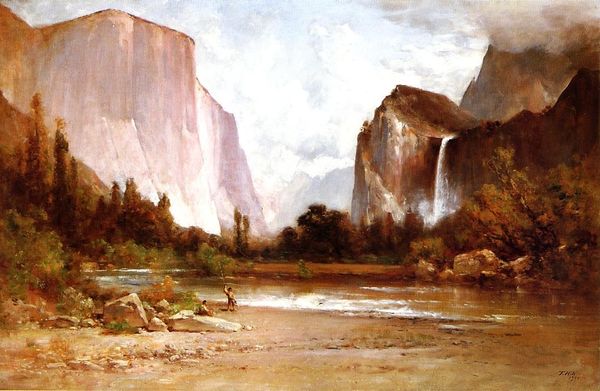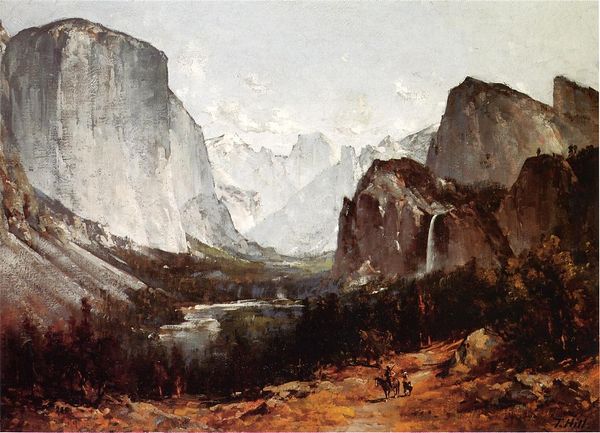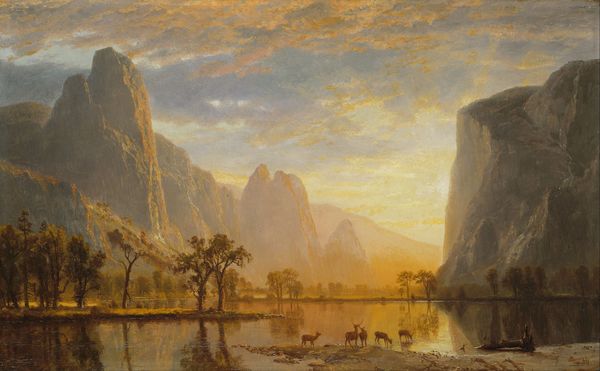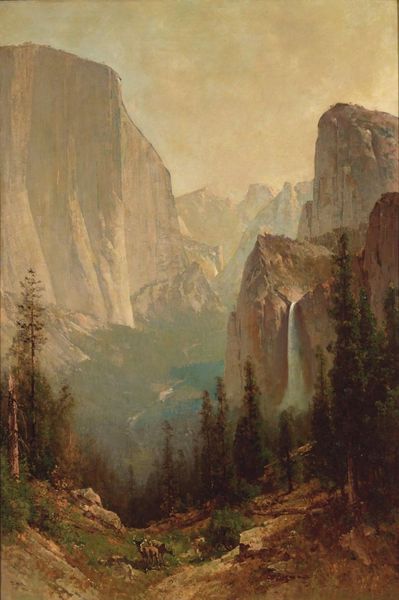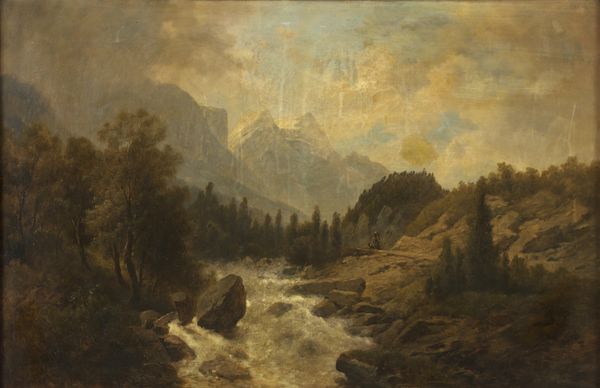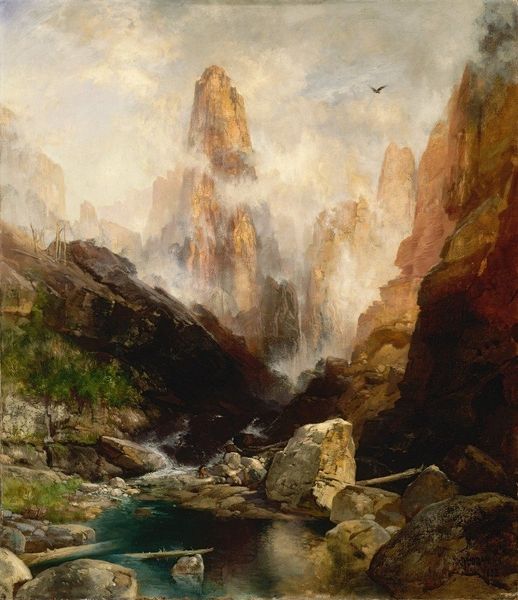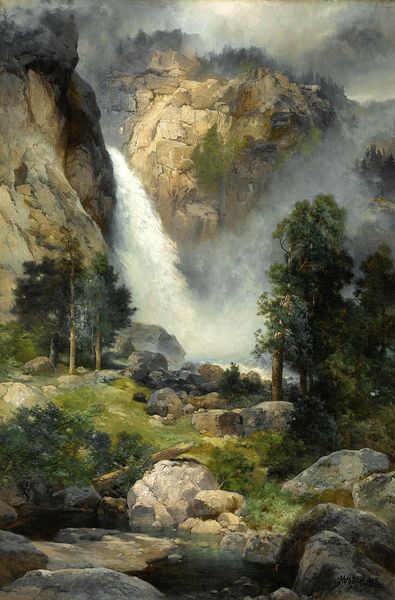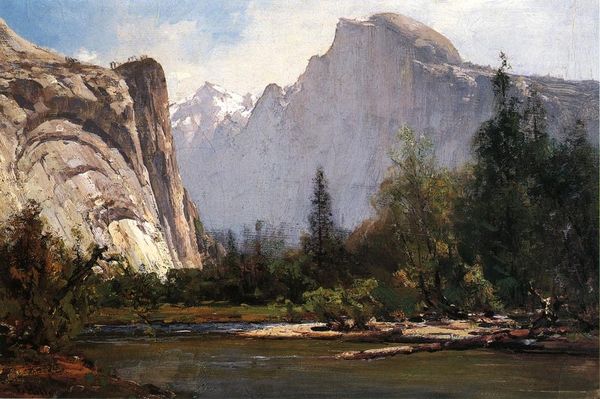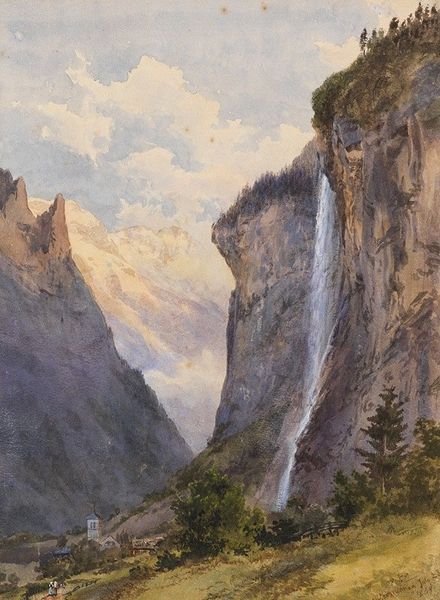
Dimensions: 36 1/4 x 54 1/4 in. (92.1 x 137.8 cm)
Copyright: Public Domain
Curator: Let’s consider Thomas Hill’s "View of Yosemite Valley," an oil on canvas painted in 1885. It’s currently housed right here at the Metropolitan Museum of Art. Editor: It strikes me as undeniably picturesque, almost overwhelmingly so. The sheer scale is impressive, but there's a curated quality to it that feels...constructed. Curator: That's interesting. Hill was very much part of the Hudson River School, deeply embedded in a cultural moment where landscape painting was tied to notions of national identity and westward expansion. He certainly aimed to capture the sublimity of nature. Editor: Sublimity, yes, but sublimity for whom? This view is mediated by the painter's, and subsequently the viewer’s, position. A lone fisherman is placed rather centrally... Doesn’t this scene feel very coded in terms of gendered ownership and control? Curator: Indeed, the fisherman inserts a human presence within the grandeur, a common trope in landscape painting. Think about the historical context: Yosemite was becoming increasingly accessible, seen as a destination embodying the American wilderness. The railroad played no small role, for one thing. Paintings like this promoted that view. Editor: And that ties into a broader narrative of Manifest Destiny, doesn't it? Showing nature as both powerful and tamed. Also, the representation of indigenous peoples is notably absent. Were landscapes presented as uninhabited, ready for "discovery"? Curator: Sadly, you're right. Often those representations were pushed aside, subsumed. Paintings such as Hill’s advanced the visual rhetoric of possession. It bolstered the arguments towards the conservation of these natural treasures. It also ignores the complexities, to say the least, of how these landscapes existed prior. Editor: So, while the brushwork and detail are technically accomplished, for me this painting serves as a reminder of the power of landscape art to reinforce ideologies. We must be mindful of the stories that art chooses to tell, and just as importantly, those it silences. Curator: Precisely. Seeing art through this critical lens challenges our initial aesthetic appreciation and opens up much richer dialogues around culture, power, and history. Editor: It invites us to engage with art actively, rather than passively consuming it.
Comments
No comments
Be the first to comment and join the conversation on the ultimate creative platform.
